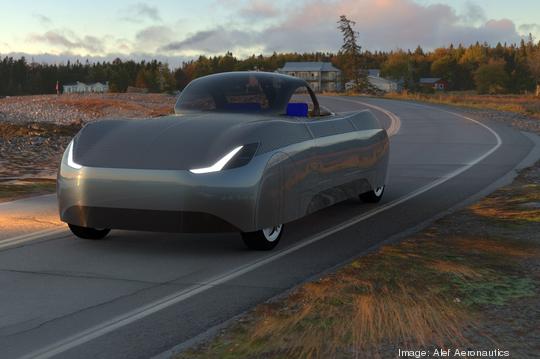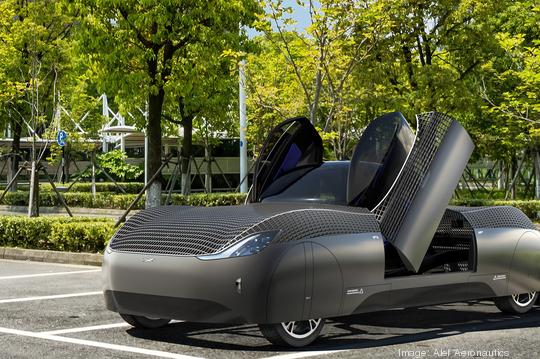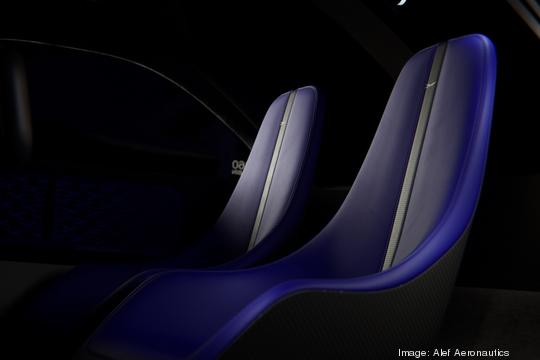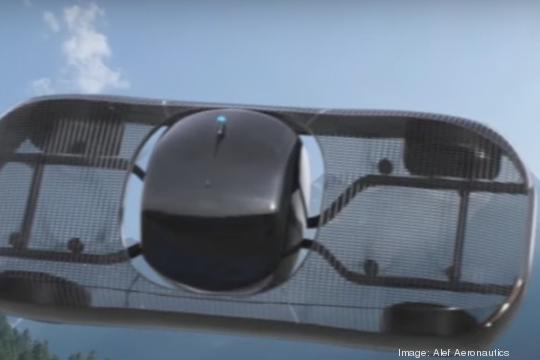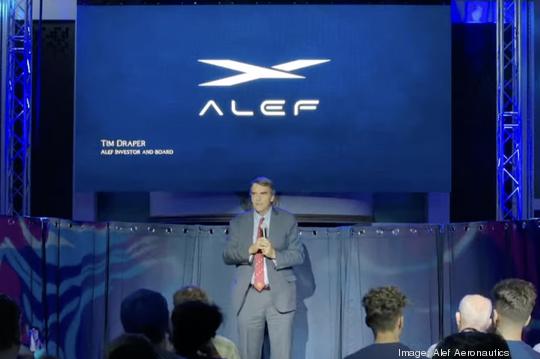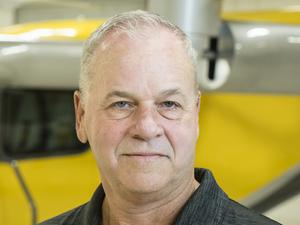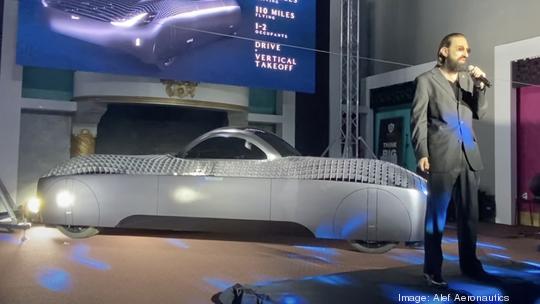
Engineers have been trying to design a practical flying car for 100 years. The people behind a Santa Clara startup think they've finally done it.
Unlike many previous efforts, the vehicle Alef Aeronautics Inc. unveiled this week actually looks like a car, at least in size and outline. It can be driven like one, fit into a regular parking space and doesn't have wings that need to be folded back or snapped on.
But Alef's Model A also flies like many of the air taxis in development by companies like Joby Aviation Inc. and Archer Aviation Inc., with a system of battery-powered rotors that allow it to takeoff and land vertically. In its case, though, the Model A's rotors happen to be hidden under its mesh-like skin.
"What we are doing is very different from what companies like Joby, Archer and Wisk are designing," Alef co-founder and CEO Jim Dukhovny told the Business Journal Thursday. He continued: "We are making a car that can fly."
The Model A takes to and moves in the air via a system of eight propellers that are attached to its frame under the areas where the trunk and engine would be in a conventional car. Except for the rotors and frame, those parts of the vehicle are empty and covered by its porous skin, which allows air to pass through to the propellers.
The Model A is a transformer
The vehicle transitions from road to air with a vertical liftoff and then turns on its side to fly, with its front and back acting as wings. As the Model A transforms from a road vehicle to an aircraft, its two-seat passenger compartment rotates so the driver is always looking ahead.
With no trunk, all of the storage for the Model A is in the passenger section. Compared to a normal car, that isn't much space, Dukhovny acknowledged.
But "you would be amazed at how much you can get in there," he added.
Alef Aeronautics unveils 'flying car'
Alef designed the Model A to travel up to 200 miles on the road or 100 miles in the air on a single charge. It's been testing its flying-car concept since 2018 with a tank-like prototype dubbed the Alef Zero.
Although the Model A is in the same class of aircraft as air taxis, in that it will also be an electric vertical takeoff and landing (eVTOL) vehicle, it's radically different in design and use, Dukhovny said. It doesn't look like an oversized drone for one thing. Unlike many of the air taxi companies, which plan to either operate their aircraft themselves or sell them to commercial operators, Alef plans to sell its vehicles to the public.
Also unlike air taxis, the Model A still can function even when weather conditions don't permit flying, because it can be driven, Dukhovny said. And Alef's vehicle won't be restricted to taking off and landing at special facilities, also known as vertiports, he said.
Because of its size and shape, it will be able to takeoff or land anywhere. Indeed, drivers could take advantage of its flying capabilities to navigate over traffic accidents or obstructions.
"Comparing us to other flying car companies is like comparing a flashlight and a Tesla," Dukhovny said.
Don't expect to see any Model A's flying around anytime soon, though.
Alef still has questions to answer
Alef is still in the early stages of developing the vehicle. It doesn't expect to begin producing the Model A until 2025.
Before the vehicle can be flown by the general public, it will have to be certified by the Federal Aviation Administration in the same process the air taxi aircraft will have to undergo. Owners and operators who want to take their Model A up in the air may need to have a pilot's license in addition to a driver's license.
"We are in discussions about that, and I hope a pilot's license will only be needed if owners do more than use the vehicle to hop over traffic and obstacles," Dukhovney said. "But we shall see."
One other challenge for the company: It will need to raise a lot more capital to have enough money to last through the certification process and to begin production, Dukhovney. He declined to disclose how much Alef has raised to date from venture investors but said the company would disclose more at a future date.
Even with so many questions remaining to be answered, Alef has already begun taking pre-orders for the Model A, asking for a deposit of either $150 or $1,500. Those who pay the larger amount will be at the front of the line to get a vehicle.
One person who wishes he already had Alef's flying car is Tim Draper. At the startup's unveiling of the Model A on Wednesday at the venture capitalist's Draper University in San Mateo, Draper, one of Alef's early backers, recounted his experience of getting to the event. After being stopped in traffic on California State Route 92 for more than 20 minutes, Draper drove his Tesla off the road to a nearby exit, he said.
"The whole time I was thinking, Alef, Alef, Alef: I wish I had one of them right now so that I could hop over this mess," Draper said.
